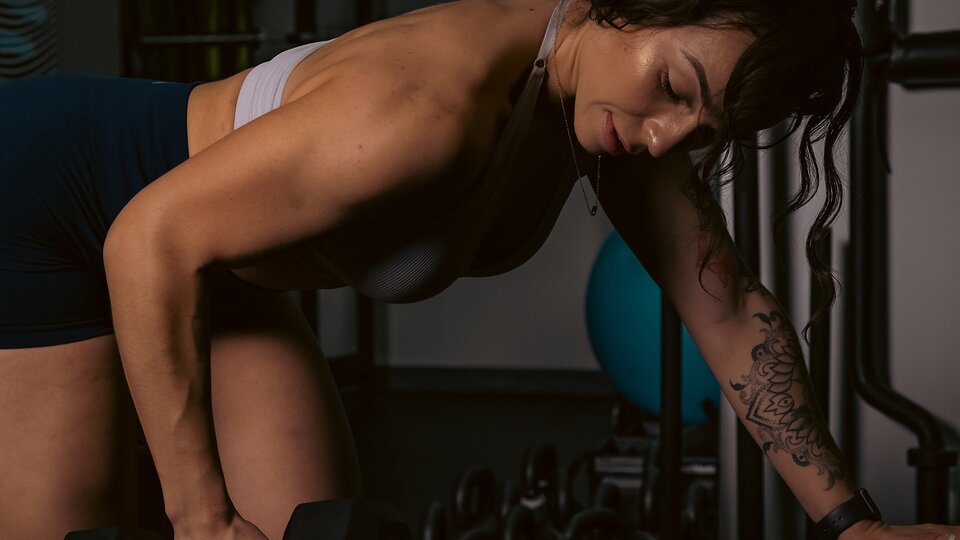There is a lot of equipment in the gym, making it overwhelming to choose a starting point. One way to do so is to break exercises down to their fundamentals. Movements can be distinguished into two categories: bilateral and unilateral. Bilateral involves both sides of the body working together, traditionally done with a barbell. Unilateral isolates one side of the body with a dumbbell or cable. If it came down to choosing between the two, which one would be better?
Bilateral for Overall Strength
We all dream of bending the barbell. Strength can be measured through bilateral movements, especially with a barbell. The Big 3 (squat, deadlift, bench press) show off the true strength of an athlete. These movements reflect how much overall coordination an athlete can implement against resistance. Bilateral movements are the best translators of someone’s coordinated strength (1).
General Health
Bilateral movements can round out an entire workout routine. For anyone looking to simplify and optimize their time in the gym, the priority should be these exercises. They get the job done efficiently. Full-body workouts incorporate this mentality often. Sometimes, less in a routine is more.
Translates into Everyday Life
Bilateral movements are hidden in our everyday, primal functioning as humans. It’s been this way throughout our entire evolution. We squat down, hinge our hips, and push or pull things. It’s not very often we kick back our triceps. General labor is a fantastic example of these movements. Whether it’s carpentry, landscaping, or masonry, practicing bilateral movements will maintain our function as humans.
Unilateral for More Range of Motion
Unilateral movements will improve form through utilizing a wider range of motion. Range of motion is as valuable of a component as strength. Some athletes even value it more than the number on the weights. An athlete who trains unilateral movements develops a wider physical palette for their set of skills. A dumbbell row can recruit muscles that you weren’t previously recruiting in your barbell row. The more variety, the more potential for strength. Athletes in a study that practiced unilateral movements for six weeks actually improved their strength in bilateral movements too (2).
Even Out Muscle Imbalances
You may find yourself relying on one side more than another. For bilateral movements, that’s a huge mistake. Unilateral movements provide a chance to even out both sides. Even if you think your form is “good enough” on a bilateral movement, a unilateral movement can expose a potential muscle imbalance in your form. If you can curl more with one arm than another, remember this the next time you practice the barbell curl. In every rep, concentrate on recruiting that weaker side.
Translates into Athletics
Athletes, no matter the sport, should incorporate unilateral movements into their training. Sports require coordination, or a pattern of mind-muscle connections. The better athlete will be the one with better mind-muscle connections. Running, for example, is an explosive unilateral movement, using one leg at a time. Someone who exercises the fast-twitch muscles and unilateral movements in the lower body will become a faster runner. Kettlebell swings, jump lunges, and split squats can create more coordination for a runner. Basketball players who practiced unilateral work had shown faster sprints as a result (3). An athlete with proper vertical and horizontal coordination can achieve more on the field and in the gym.
Aesthetics
Some people workout to look good, even crafting careers out of it. If you want to look more muscular, you have to train more muscles. Bilateral movements will make your athletic physique bigger, while unilateral movements will bring out their definition. Banging out a dozen sets on the bench press for an hour won’t get you the chiseled chest of Henry Cavill. However, incorporating single-arm cable crossovers and dumbbell lateral raises will expose the vertical lines across your chest and shoulders. Unilateral training is a valuable asset for aesthetics, training an athlete to look more ripped.
Use Both!
It is not as simple as choosing one over the other. The best answer is practice both. Athletes who want to gain strength should look firstly towards bilateral movements. Once the functionality of these exercises is understood, unilateral movements should then be practiced to further the strength of the bilateral movements. They are extensions of one another. The best workout routine is one that dedicates time towards both movements.
Works Cited

This is a great resource. Thanks for putting it together!